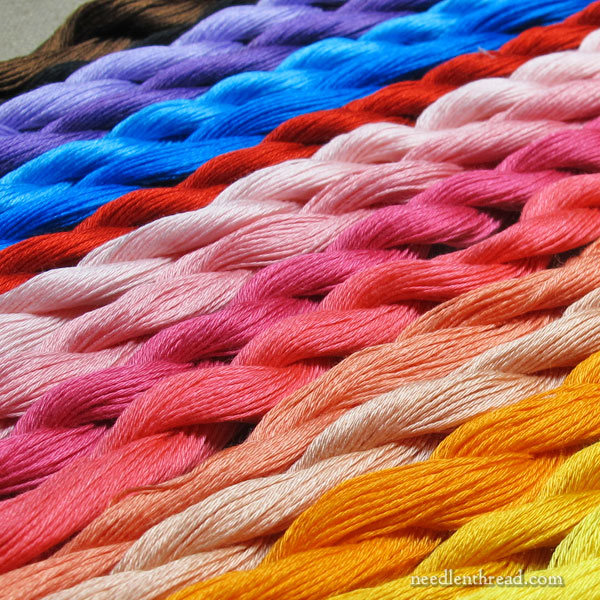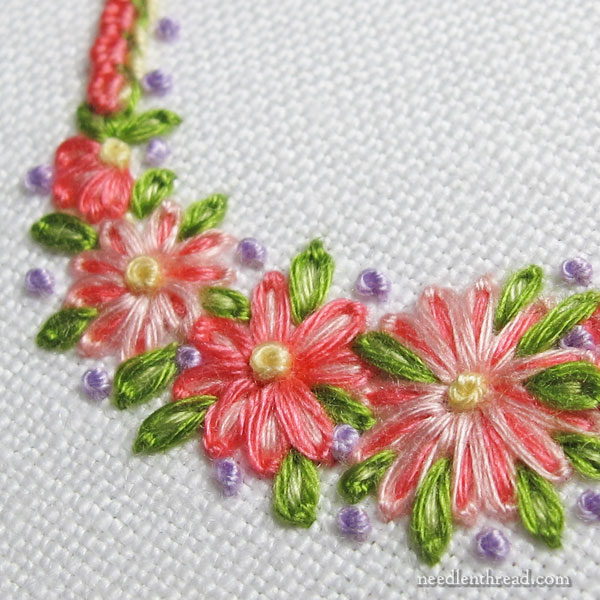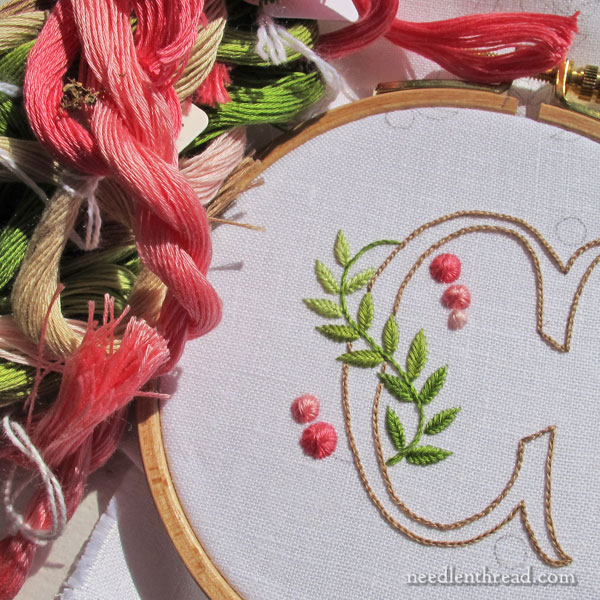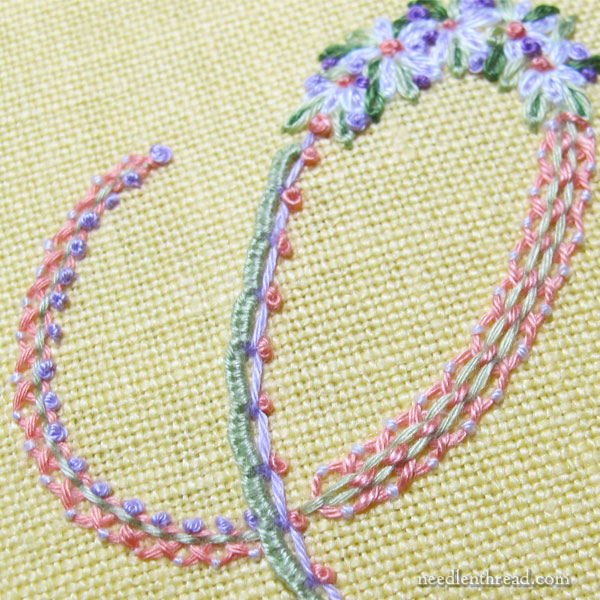Thanks to all who purchased the Garden-Bright floche thread pack last week!
I was really excited to get those launched, and from the feedback so far, I’m glad to hear you’re as enthusiastic as I am about the threads! We have more floche winging its way to us right now, and we’ll be restocking those packs as soon as possible.
I’ve received a few questions about floche since launching the thread packs, so I’m going to revisit the thread here with a few little tips.
I’ve written so much about this thread already, though, that I’m pretty sure most questions you’d have about it are already available here, in-depth, on the website. Feel free to use the link at the end of this article to explore the thread in more depth.

Twists & Lengths
First, let’s talk about handling the twists of floche and about thread length when stitching.
As mentioned before, floche normally comes in a super large hank that requires some special handling. The twists, however, are much easier to manage, because we’ve done the hard work for you!
For those who are baffled about how to un-do a twist, it’s really simple to untwist the twist. The easiest way is to stick your finger in at the top of the twist, where the tied tag is, into the fold. Make sure you’re exactly in the fold of the bunch of thread, not picking up threads from each side of the fold. Then, just gently run your finger down the twist, allowing the twist to untwist.
At this point, you’ll have a strait bunch of floche tied in the middle with the number tag. Now just pull one strand out at a time as you need it.
You’ll notice that that one strand is quite long. I cut these single strands into thirds and use one third of a single strand at a time. You can cut them in half – you’ll end up with a much longer thread – but floche is a soft thread, so shorter lengths are better to stitch with. With shorter lengths, you’re less like to run into the problem of the thread wearing out as you stitch. Your finished embroidery will look much better if you use shorter lengths.
If your thread begins to release fuzz from the needle-eye-end of the thread as you’re stitching, you can trim the thread in the eye a little bit, so that it doesn’t continue to release fuzz. As long as the length of the thread still looks good, then stitch away! But if the length starts to look dull or particularly fuzzy, then it’s time to switch threads.
This rule holds for all embroidery, with any thread, but with softer fibers – like floche or spun silk, for example – the thread usually will wear sooner, so you want to catch that right away and switch to a new thread.
Needles, Weight, & Designs
I prefer a #8 embroidery needle (also called a “crewel needle” in some brands) with floche. It’s the perfect size. I use #8 (and #7) embroidery needles the most frequently with most of my general stitching, but I really prefer a #8 with floche. That said, you can get away with a 7 or a 9. I think a #10 embroidery needle is too small, and I find anything larger than a 7 far too big.
The weight of floche (the thickness of the stitched line) is comparable to somewhere between one and two strands of regular stranded cotton. It’s not quite as heavy as two strands, but it’s not as fine as one strand.

When stitching with floche, use one strand – just one string, as it comes off the twist. Don’t try to separate it, and don’t double it.
Floche is a great weight for line stitching. (Think: decorative embroidery on household linens, on flour sack towels, on quilt squares – anywhere type of design or application where you’re using embroidery to outline.)
It’s slightly heavy for very detailed long-and-short stitch, but it covers well and it works up quickly for less detailed long-and-short stitch. So, you might not use it on, say, a very detailed needlepointed animal, bird, or flower, but you could definitely use it on florals, animals, scenery, and stylized designs (Jacobean styles, etc.) that are not as finally detailed as realistic-looking needlepointed birds and the like.

Floche is an exquisite thread for satin stitching, monogramming, smocking, and embroidery on heirloom sewing. It’s really the ideal cotton thread for these applications. In fact, I’d say it’s probably the heirloom sewing, monogramming, and smocking crowd that has kept floche in circulation, thank goodness.
Design Ideas
If you’re playing with your floche and trying to decide what to try out with it, here are a couple suggestions:
Stitch Sampler Alphabet is a colorful and fun collection of letters worked in a wide variety of embroidery stitches, composites, and combinations. Many of the samples in the PDF were embroidered with floche.

You can work any of those letters in any of those stitch combinations using floche. With this PDF, not only will you get used to working with floche, but you’ll learn a heap of embroidery stitches and combinations that you can apply to other projects. You’ll also get comfortable with combining stitches and colors.
Favorite Monograms is a design source publication featuring 16 alphabets for monograms. Any of the monograms in this PDF will look beautiful embroidered with floche!
Explore Floche Further
You’ll find an extensive collection of articles that involve floche in one way or another under this tag “floche” here on the website, if you want to explore the thread further. Tagged articles are arranged from most recent to oldest, so if you want to explore chronologically, scroll to the end of the list and work your way upwards.
I’m pretty sure just about every question you have concerning floche will be found in these articles. But if you have any specific questions that aren’t answered already in those articles, feel free to leave a comment below. That way, others can benefit from your question, too.







Dear Mary
I really like floche it is such an easy thread to work with and looks lovely when stitched on a project. Thank you for the tips on how to stitch with floche especially the size of needle to use and how to untwist floche that is a great help . I have the stitch sampler alphabet and have stitched letters from it which were very easy to follow and looked great with floche. Thank you for sharing with us some tips on floche thread and how to stitch with it.
Regards Anita Simmance